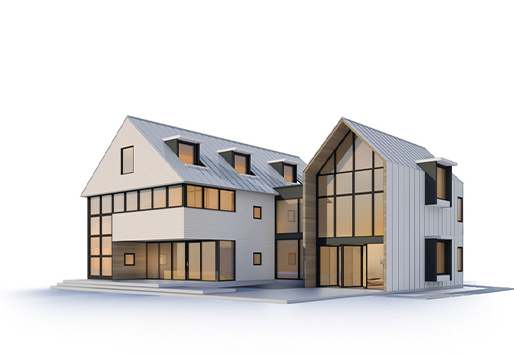Ideas
5 farmhouse designs
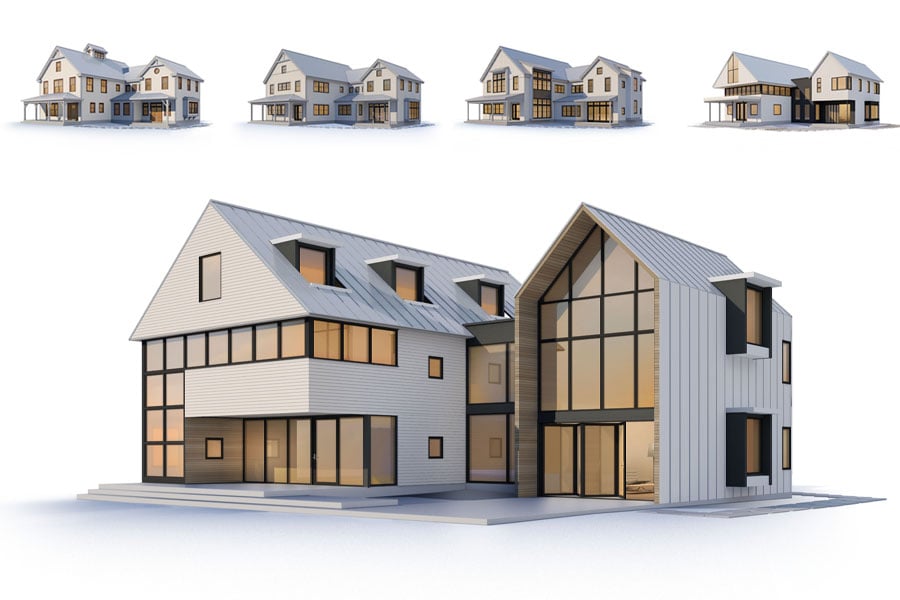
The rise of the Modern Farmhouse style reflects an embrace of simplicity and practicality. Its look is simple and clean, while offering the versatility to be customized with personal preferences and thoughtful changes. Today’s Modern Farmhouse designs have an urban edge that mixes well with other styles while retaining the warm, approachable feel of more traditional designs.
“Farmhouse is an overall design that people can really play with; they don’t feel like they have hard-and-fast rules that they absolutely must apply,” said Marc Sloot, AIA, senior associate at SALA Architects. “Part of the ongoing appeal for the Farmhouse style is that people feel they can express their own originality, whether on the more traditional end or the more contemporary end. It still has the characteristics that feel comfortable, but they’re able to put their own stamp on it.”
With that in mind, we developed five variations of the Farmhouse style, with assistance from Sloot and SALA Associate Marta Snow, AIA, that move from traditional and classic to modern and edgy.
Traditional
The American Farmhouse is traditionally one-and-a-half to two stories and features an asymmetrical structure with a gable at the front. These homes exhibit simple detailing, open floor plans with central chimneys, and often wraparound porches. For this take, we swapped the chimney for a glassy cupola, achieving a similar look with a more unique approach.
Common window and door styles to get this look include double-hung windows, hinged patio doors with transoms and grilles, and Arts and Crafts entry doors with sidelights. (Though not historically accurate for a Traditional Farmhouse, Arts and Crafts entry doors have attributes that work well for Farmhouse designs on this end of the spectrum.)
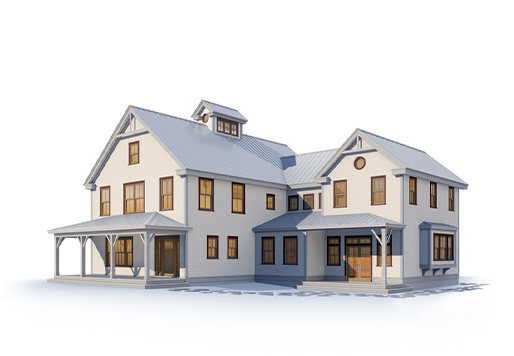
Classic
This update on the traditional look simplifies the details. The cupola is gone, as are supports on the porch. Board-and-batten accents add a visual pop to the gable. While the changes are subtle, they’re different enough to streamline the look.
The larger casement windows stand out and are used more in combination. Similarly, the hinged patio doors have fewer grilles and include sidelights.
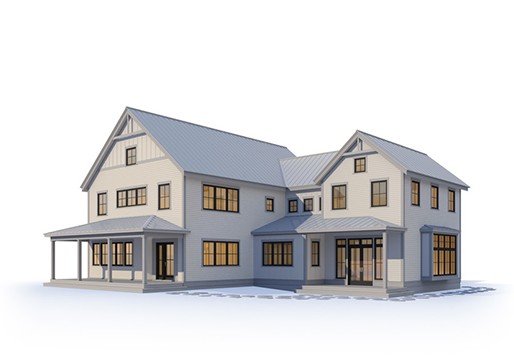
Transitional
“The transitional approach to the Farmhouse starts to play with the form a little bit,” explained Sloot. “Windows are a little taller, bigger. Some of the lines shift, such as from a simple gable to a shed-side dormer, starting to break away from the traditional forms.”
Large window combinations, such as E-Series windows, and the addition of transoms increase the amount of glass — and therefore natural light. Awning windows appear along with the casements, and the hinged patio door includes full-height sidelights. Sliding patio doors may also be used.
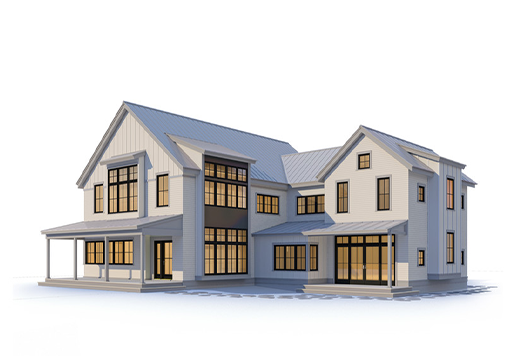
Modern
Clean lines, asymmetry and fun window combinations infuse both sophistication and whimsy into this home. More glass provides greater amounts of light, while the nonuniformity of the window placement adds interest.
A large, four-panel door like the MultiGlide™ door, encourages indoor-outdoor living. The casement windows no longer include grilles providing a cleaner look. And transoms and sidelights are eliminated from the doors. Corner units and thin frames add a decidedly modern edge.
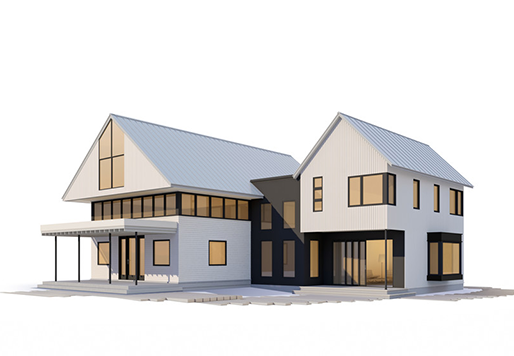
Contemporary
A barn-like structure and dormers are reminiscent of the Farmhouse origins, but with expansive walls of glass, dramatic sightlines, cantilevering punched openings and massive doors. This design is responding to today’s trends. It’s striking in its elegance and minimalism.
E-Series windows in casements, awnings and specialty shapes take up much of the façade. And a bi-folding door creates a seamless connection to the outdoors when opened.
